How to Fix HDMI ARC/eARC Not Working Issues
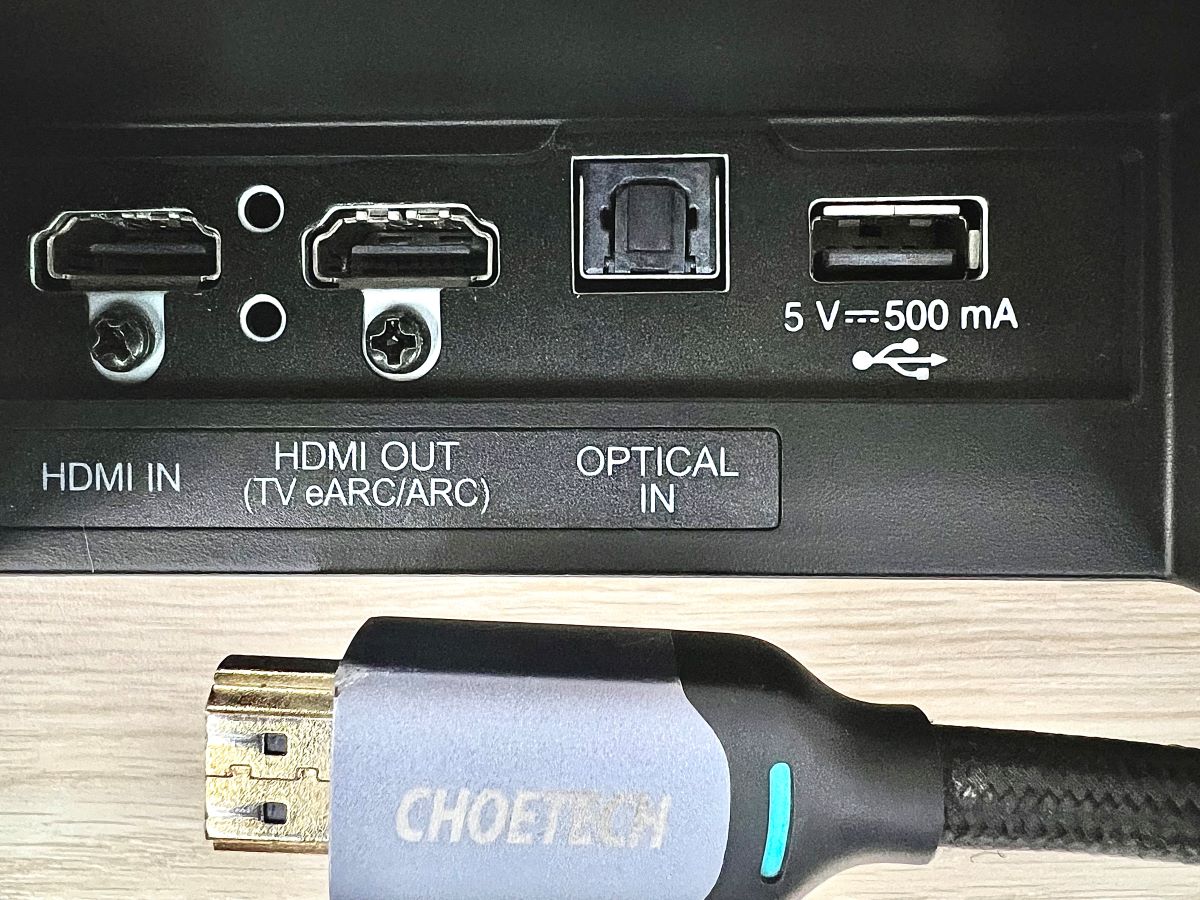
Quick Fixes for You
- Secure the HDMI cable and, if needed, perform a soft reset by powering off and unplugging the TV and soundbar for 30 seconds.
- Verify you’re using the correct HDMI ARC/eARC port; enable the function if it’s not automatic, and use at least a High-Speed cable for ARC or Ultra-High-Speed for eARC.
- If there’s no audio, manually change the TV’s sound output to HDMI ARC/eARC; for persistent issues, update the firmware or consult brand support.
Turning on your TV and soundbar, you expect seamless audio and video integration.
But what if the HDMI ARC or eARC refuses to cooperate?
This guide delves deep into resolving precisely such challenges, offering solutions derived from our tech team’s expertise and validated by users across various forums.
Quick Navigation
- 1. Common Problems Require Easy Solutions
- 2. Perform a Soft Reset on Everything
- 3. You’re Not Plugging into the HDMI ARC/eARC Port
- 4. You’re Not Enabling ARC/eARC Function on Your TV Yet
- 5. You’re Using an Obsolete HDMI Cable
- 6. You’re Enabling the Wrong Sound Output
- 7. Your HDMI Cable Doesn’t Support the HDMI eARC Feature
- Conclusion
1. Common Problems Require Easy Solutions
Before digging deeper to trace more complex reasons behind the issue, ensure the setup’s basics are in place.
Make Sure the HDMI Cable Is in Order
Although HDMI cable connectors fit snugly into their corresponding ports on your TV and soundbar, there’s scope for some wobble or the cable coming loose.
Therefore, check that the cable is connected securely. If it’s slightly slack, push it in, or unplug and replug the cable. Check this at both ends of the line.
Get an HDMI Cable Lock
Use an HDMI cable lock to secure the cable and avoid accidental disconnections.
The lock will come in particularly handy if you have kids and/or pets at home who may tend to latch on to cords and pull at them.
You may also use cable ties or Velcro straps to assemble and secure cords. When the cables are organized, they are less likely to come in the way and cause people to trip on them, ensuring a secure connection.
2. Perform a Soft Reset on Everything
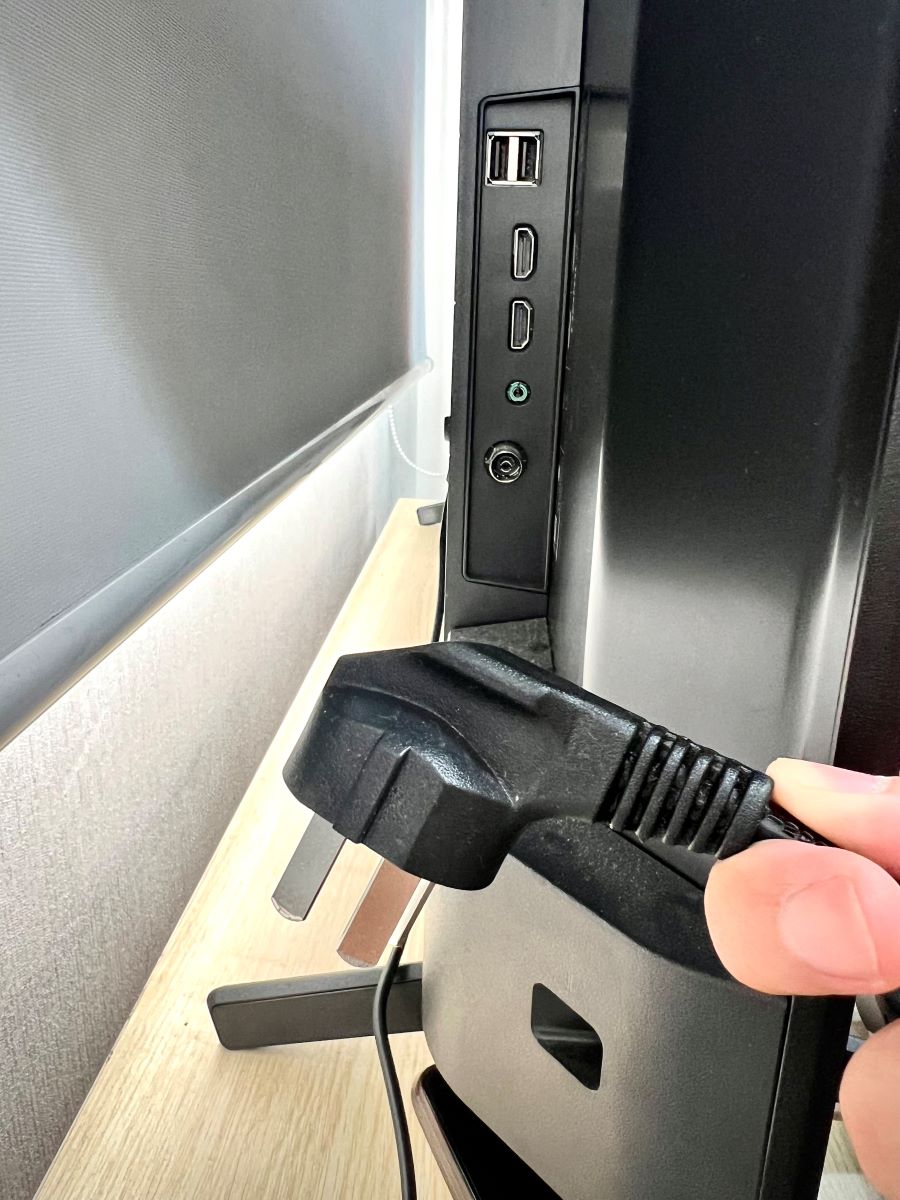
Do a soft reset or a restart. It could work as it did for this Reddit user.
A soft reboot is a troubleshooting measure that helps resolve multiple software-related problems by restarting software processes, clearing temporary memory, restoring the device’s stability, etc.
If temporary software bugs or glitches impact ARC/eARC’s standard operations, a soft restart will clear them and restore proper communication.
Maybe the software processes handling ARC/eARC functionality got stuck or became unresponsive and needed a refresh, which a soft reset provides.
The reboot also resets settings or can revert wrong settings or configurations to their original values.
To soft reset the TV and soundbar, power off and unplug them. Let them remain sans cables for 30 seconds to a minute at least.
After the stipulated time has elapsed, replug the devices and try the ARC/eARC functionality again.
3. You’re Not Plugging into the HDMI ARC/eARC Port
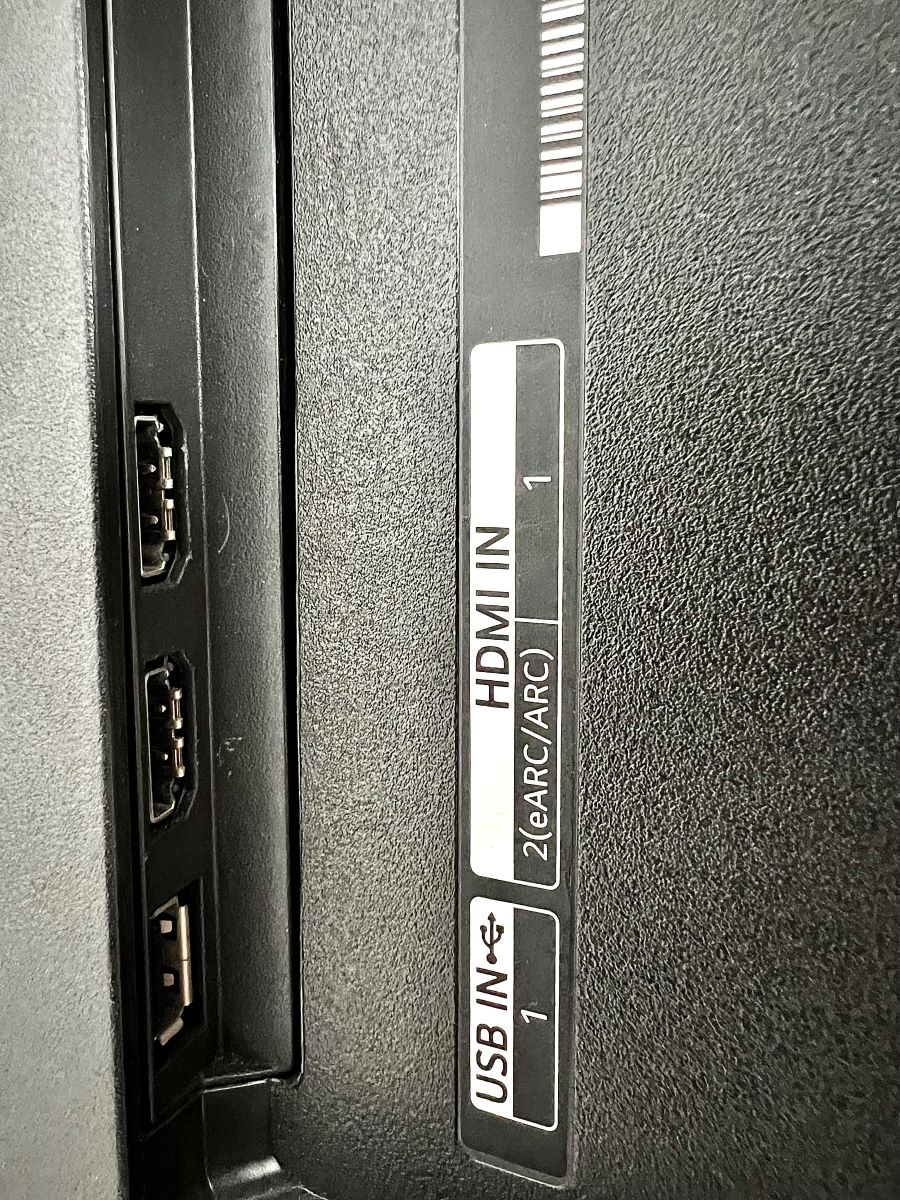
A smart TV usually has one or two HDMI ports. It will have at least two ports if it supports HDMI ARC/eARC.
One port will be labeled ARC/eARC, so you don’t get confused or know which supports the two-way transfer.
If you ignore the label and plug the HDMI cable into the non-ARC/eARC port, the audio output will not come through from the TV to the soundbar.
The error usually happens when people don’t realize ARC/eARC ports are unique from traditional HDMI ports. At times, the labeling may not be prominent, causing confusion.
To help make identification easy, some TV manufacturers use different colors, labels, or icons to help the ARC/eARC port stand out more and prevent confusion.
4. You’re Not Enabling ARC/eARC Function on Your TV Yet
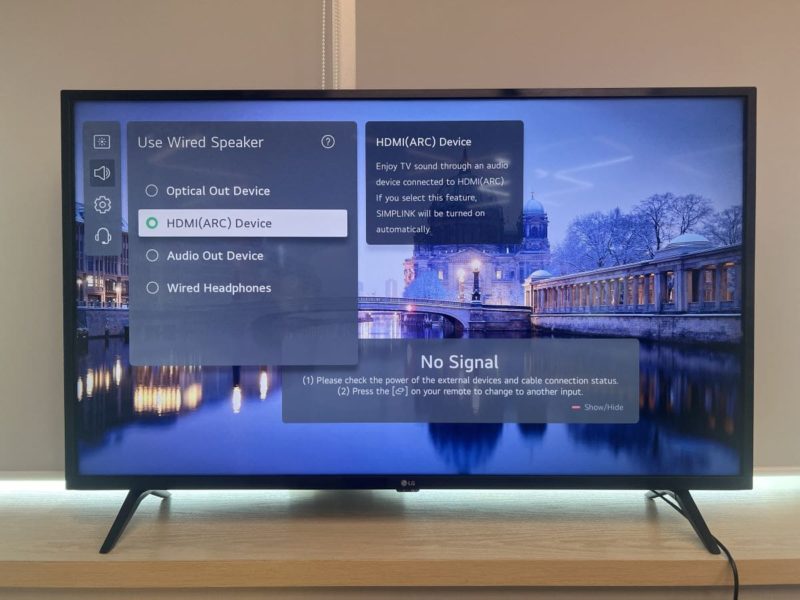
Although HDMI ARC/eARC ports work by default, they may require manual activation in several other cases.
In other words, you must enable a particular setting in the TV to ensure audio passthrough from the TV to your soundbar.
Some TV manufacturers do not turn on the ARC/eARC ports by default because not every TV user uses or needs a soundbar.
And when they don’t need the ARC port, using it could lead to confusion and unnecessary complexities.
In other words, if perennially turned on, the ARC port may output audio through a connected laptop, which the user did not want.
Since ARC and non-ARC HDMI ports are physically identical, disabling ARC/eARC gives dual purposes to the particular port and does not restrict it in any way.
Hopefully, you now understand why some companies turn off their ARC/eARC ports on their TVs and give the user the option.
Click here to learn how to enable ARC/eARC on your TV.
5. You’re Using an Obsolete HDMI Cable
As stated earlier, ARC was part of the HDMI 1.4 specification. HDMI eARC came later. Therefore, to use ARC and eARC, you’ll need an HDMI 1.4 or 2.1 cable, respectively.
Although HDMI cables are backward-compatible, you’ll need the cords that can handle the bandwidth or data transfer speed requirements of ARC or eARC.
HDMI broadly categorizes its cables as Ultra High Speed, Premium High Speed, High Speed, Standard, etc. Standard HDMI cables (HDMI 1.0 to 1.2a) are several years old and don’t meet ARC requirements.
The minimum requirement to use HDMI ARC is a High-Speed HDMI Cable, preferably a shielded cord and one that isn’t too long, as the cable’s length can impact signal quality.
But you may certainly use older-gen HDMI cables. They may, however, not support certain audio formats due to their lesser bandwidth capability.
For eARC, an Ultra High-Speed HDMI cable (an HDMI 2.1 cable) has the bandwidth needed to handle eARC’s requirements without breaking a sweat.
Since HDMI cables don’t cost much money or the price gap between the different quality types is not significant, buy a cable that’s certified to be the snappiest.
6. You’re Enabling the Wrong Sound Output
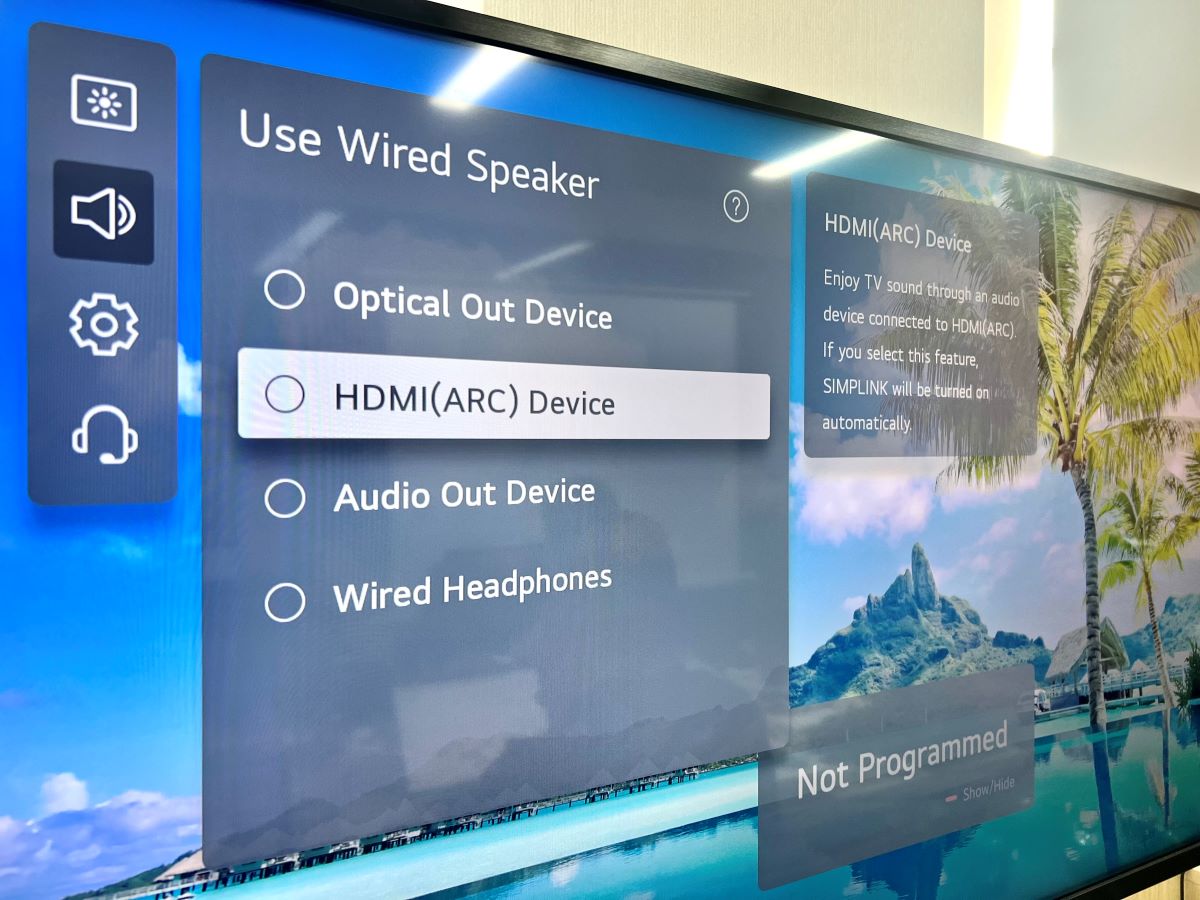
In certain TV brands, such as LG, plugging in a soundbar will not automatically nudge the TV to switch the audio output to the set of external speakers. You’ll have to change it manually, like this Reddit user.
Therefore, if you’re not hearing audio through the soundbar connected to your TV’s ARC port, check its audio settings.
If the sound output was set to something else and not HDMI ARC/eARC, that could have been the reason for the no audio issue.
The steps to change the audio output settings will vary based on your TV and its make. The below table lists the steps for the three major brands:
| LG | Press the Settings button > All Settings > Sound > Sound Out > Use Wired Speaker > HDMI (ARC) Device |
| Samsung | Settings > Sound > Sound Output > Receiver (HDMI). In the Sound menu, head to Expert Settings > Digital Output Audio Format > Auto |
| Sony | Settings > Display & Sound > Audio output > Set Speakers to Audio system & Digital Audio Out to Auto mode |
Note: that the steps may vary slightly based on the TV software version and model.
7. Your HDMI Cable Doesn’t Support the HDMI eARC Feature
As mentioned earlier, HDMI eARC needs an HDMI cable that can handle the bandwidth requirements of an HDMI 2.1 or later connection.
Therefore, if you’re using Standard HDMI or maybe even High-Speed HDMI, you may encounter problems with eARC.
Consider using Ultra High-Speed HDMI cables instead, such as:
Or turn off the eARC port in the TV’s settings.
If you use a Samsung, head to its Settings > Sound > Expert Settings > HDMI-eARC Mode > Off. If the TV is some other brand, refer to its user manual for help locating the setting.
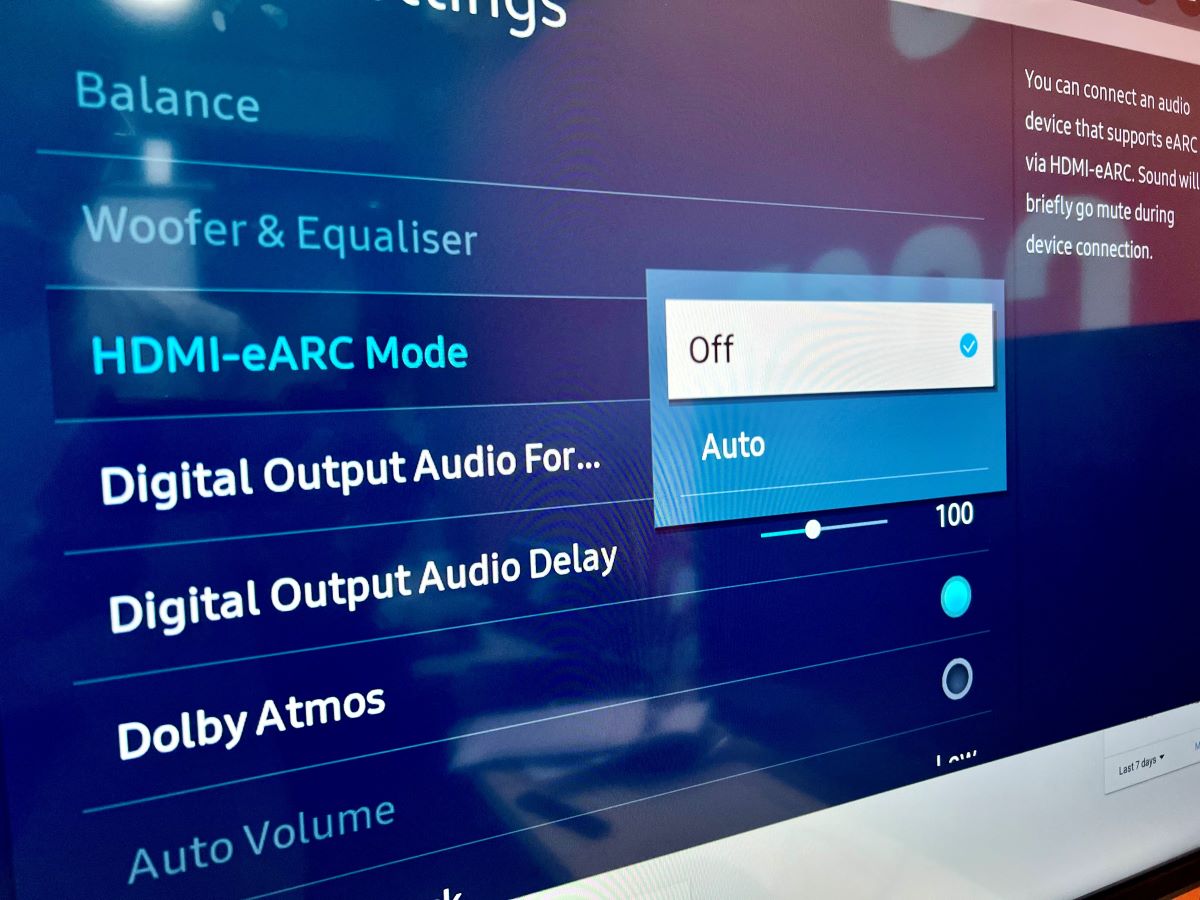
Note that if you use a soundbar that supports ARC (and not eARC), the backward-compatible HDMI eARC port will nerf itself down to accommodate the ARC soundbar.
In that case, you can continue using your regular High-Speed HDMI cable. The need to disable eARC or use an HDMI 2.1 cable arises only when the external audio supports eARC.
Unfortunately, TVs don’t have an audio feature or setting that lets users dial down eARC to ARC.
Conclusion
The HDMI ARC/eARC issue plaguing your TV and soundbar should be rectified once you implement one or more of the above-mentioned fixes.
If they don’t help, look for any pending software updates for your devices. If the TV or soundbar are not using the latest firmware, they may develop compatibility issues. Or the new firmware updates could have bundled in fixes for the problem.
You may also factory reset your TV. But it should be your last resort, and do it only at the behest of official TV support or an expert.
Contact brand support for your TV and apprise them of the issue. If they deem a factory reset is necessary, go ahead. Until then, keep trying other things.
In the rarest cases, your soundbar or TV’s HDMI ports could have faulty hardware. The defect may have been congenital or due to wear and tear.
In that case, none of the above solutions will help, and you’ll either have to repair the port or replace the device altogether.
Catherine Tramell has been covering technology as a freelance writer for over a decade. She has been writing for Pointer Clicker for over a year, further expanding her expertise as a tech columnist. Catherine likes spending time with her family and friends and her pastimes are reading books and news articles.


